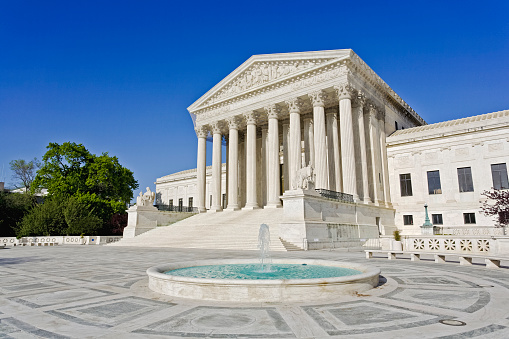The strictest anti-abortion law in decades – enacted in Texas on Wednesday – has passed its first Supreme Court test after an emergency appeal was blocked 5-4.
Most abortions are now illegal in the country’s second largest state. The law prohibits the procedure after fetal cardiac activity is detected, usually around six weeks and before many women know they’re carrying.
That timeline defies existing Supreme Court precedents that prohibit states from banning abortions before fetal viability – about 22 to 24 weeks into a pregnancy.
But on Wednesday the conservative majority on the Supreme Court – less Chief Justice John Roberts, who dissented – said they weren’t ruling on the constitutionality of the Texas law. Instead, they blocked the appeal because it failed to address the “complex and novel” procedural issues at play.
In other words, Texas lawmakers succeeded, for now at least, in using legal cunning to skirt abortion rights already established by longstanding precedent. That’s because the new law empowers citizens – not the state – to file lawsuits against anyone who performs or “knowingly … aids or abets” an abortion after roughly the sixth week of pregnancy. Citizens that bring successful suits are rewarded with $10,000, which many commentators have compared to a bounty.
As Vox explains, “if no state official is charged with enforcing the law, there’s no one to sue in order to block the law.”
In a blistering dissent, Justice Sonia Sotomayor wrote, “Presented with an application to enjoin a flagrantly unconstitutional law engineered to prohibit women from exercising their constitutional rights and evade judicial scrutiny, a majority of Justices have opted to bury their heads in the sand.”
“Taken together,” Sotomayor continued “the Act is a breathtaking act of defiance — of the Constitution, of this Court’s precedents, and of the rights of women seeking abortions throughout Texas.”
CNN notes, “Under normal circumstances a dissenting justice “respectfully dissents.” Sotomayor simply wrote, “I dissent” — revealing her deep frustration.”
In Roberts’ dissent, the Chief Justice underscored the chicanery baked into the law: “The legislature has imposed a prohibition on abortions after roughly six weeks, and then essentially delegated enforcement of that prohibition to the populace at large. The desired consequence appears to be to insulate the state from responsibility for implementing and enforcing the regulatory regime.”
Justice Elena Kagan used her dissent to draw attention to the Court’s “shadow-docket,” which the New York Times defines as the “court’s practice of deciding important issues in rushed decisions without full briefing or oral argument.”
“The majority has acted without any guidance from the court of appeals — which is right now considering the same issues,” Kagan wrote. “It has reviewed only the most cursory party submissions, and then only hastily. And it barely bothers to explain its conclusion — that a challenge to an obviously unconstitutional abortion regulation backed by a wholly unprecedented enforcement scheme is unlikely to prevail.”
“In all these ways,” Kagan continued, “the majority’s decision is emblematic of too much of this court’s shadow-docket decision making — which every day becomes more unreasoned, inconsistent and impossible to defend.”
